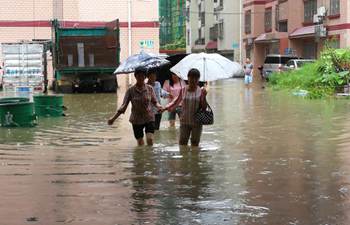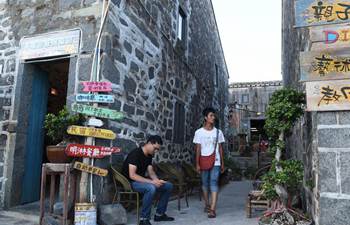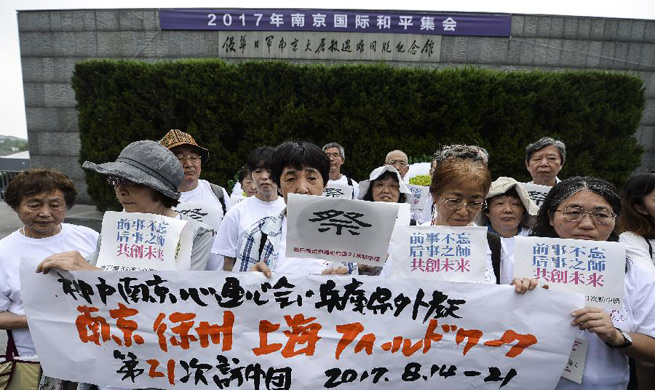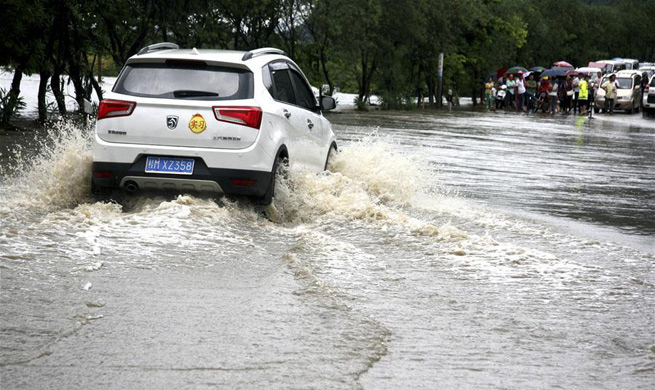BEIJING, Aug. 15 (Xinhua) -- China seems to be on track to meet its 2017 growth target despite some ups and downs, but analysts say policy makers still need to tread carefully to balance growth, risk control and reform.
Fresh data showed Monday that after a strong rebound in H1, China's growth momentum softened in July.
Due to slower property activity and weather-related disruptions, industrial production, investment and consumption were all softer than the previous month, missing forecasts. Yet, compared with July in 2016, they grew faster.
Officials and analysts believed growth may dip, not dive, in H2, making it easier for the government to balance the priorities on its work agenda.
Even slowing by 0.1 or 0.2 percentage point in H2, the growth would be reasonable and normal, and one of the best performers among major economies, said Mao Shengyong, spokesperson of the National Bureau of Statistics.
The softness in July is temporary and will not change the trend of a slower but stable growth, and the government will maintain its emphasis on financial stability and supply-side structural reform.
Apart from an expected moderation of property sales and related activities, the drive to contain financial risk and supply-side structural reform, including excess capacity reductions and stricter environment rules, may weigh on growth, UBS economist Wang Tao said.
Despite the possibly slower second half, UBS raised its 2017 forecast for GDP growth to 6.8 percent from 6.7 percent, citing the good year-to-date GDP strength.
The economy expanded 6.9 percent in H1, well above the target of around 6.5 percent for the year.
Policy makers now face hard choices in deciding the midpoint between stabilizing growth and other tasks, with downward pressure, emerging risks and increasing global market uncertainty complicating the outlook.
Continued efforts to contain financial leverage and asset bubbles since the second half of 2016 have raised financing cost in the real economy, which may erode profit margins of the corporate sector.
"The Chinese authorities will balance the competing aims of short-term, credit-fueled growth and long-term policy measures to increase the resilience of the financial system and to reduce and eventually reverse the growth of leverage in the economy," said Michael Taylor, Moody's managing director and chief credit officer for Asia Pacific.
Nomura expects the central bank to maintain its neutral monetary policy stance by carefully striking a balance between deleveraging and economic growth.
However, if cyclical momentum and inflationary pressure surprise on the upside in the coming months, "we cannot rule out a policy fine-tuning to rein in the excess in inflationary pressure," CICC analyst Liu Wenqi said.
"Seeking progress while maintaining stability" will continue in the second half of 2017, along with ensuring stable and healthy economic development, supply-side structural reform and guarding against systemic financial risks, according to a statement released last month after a meeting of the Political Bureau of the Communist Party of China Central Committee.

















